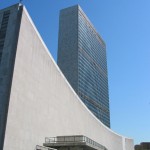Surviving a Forced Building Evacuation
Posted on Jun 5, 2014 in General
The rage and fear which erupted following the catastrophic destruction of the twin New York World Trade Center towers on September 11, 2001 provoked millions of ordinary Americans who spend the better part of every workday inside high-rise office buildings to ask: “what are my odds of survival if the unthinkable happens, and what can I do to be better prepared?”
Most accounts of the World Trade Center tragedy concentrate on the almost 2,200 building occupants who died when the buildings burned and collapsed. But what about the 15,000 who evacuated safely? Apart from just plain luck and being on a lower floor when the planes struck, what helped them to survive?
The majority of the 9/11 survivors escaped down 6 enclosed emergency stairwells, stairwells that went suddenly dark midway through the evacuation when electric and battery power in the buildings died. While a number of factors played key roles in the evacuation, the fleeing occupants were fortunate that the World Trade Center stairwells had been equipped with a then-novel photoluminescent glow-in-the-dark pathway marking system that had been installed after the February 26, 1993 underground bombing. The non-electric, fail-safe photoluminescent signs and markers activated immediately when the lights went out, providing a steady glow that delineated the stairs, landings and handrails, and prevented a forced building evacuation from disintegrating into panic and chaos.
Today’s vaulting and legitimate concern with homeland security and safety has precipitated the adoption of leading-edge international building codes that now mandate installation of glow-in-the-dark guidance systems in egress corridors and stairways of high-occupancy buildings. These include NYC RS 6-1 & 6-1A for Local Law 26, 2009 IBC/IFC (International Building & Fire Code) and NFPA 101 Life Safety Code.
